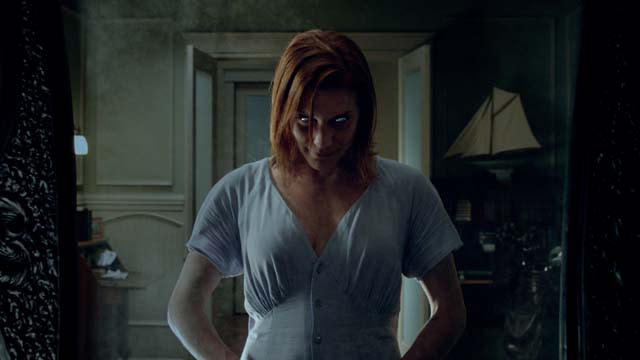Released: September 24th,
2004
Rated: R
Studio: Focus Features
Starring: Gael García Bernal, Rodrigo de la Serna
Directed by: Walter Salles
Written by: Jose Rivera
Personal Bias Alert: don’t know much about Che Guevara, never been to South America
6.6 of 10
Excuse
me while I step on this soapbox for a moment.
Why is this film rated R? Outside
of language, there’s nothing offensive in it.
No sex, no drugs, no nothing. Now,
I personally think language shouldn’t inhibit teens from seeing a movie,
because who didn’t know these words by 13 or 14? And this film is all about a journey of
self-discovery, which is basically a teenager’s life. I don’t think every teen will connect to it,
but I imagine there’s a descent amount who would find its contemplative nature
interesting. Maybe some might jump on
the internet to learn more about these characters and along the way encounter
some real facts about the world. Even if
you don’t agree with who Guevara ended up being, I can’t see how the humanist
ideas this movie throws around would be a bad thing for a teen to have rattling
around in their brain.
Okay,
rant over. Let’s talk about the actual
movie. Based on the true story of the
motorcycle trip across South America that formed Che Guevara’s political beliefs,
The Motorcycle Diaries takes its time
mapping out its character’s arcs and supplements this small story with the
aesthetic grandeur of South America. It
is, at heart, about two immature young men who are self-centered enough to drop
all their responsibilities to take a months-long trip simply for the fun of it. They’re well-to-do and used to things going
their way, so when the trip takes a turn and they start encountering people
with much bigger problems than they’re used to, they aren’t quite sure how to
take it. Hence why the languid pace is
needed; these aren’t characters who will change quickly.
Guevara
is played by Gael García Bernal, a well-known Mexican actor who has earned his
good reputation in this and other roles.
He’s pretty subtle here, convincingly playing a guy whose morals haven’t
quite solidified yet. His friend,
Alberto, is played by Rodrigo de la Serna, an Argentinian who doesn’t have the
same name recognition as Bernal even though he equals his costar in this film. His character is bigger and brasher, one that
you could see becoming a radical until you realize that he wouldn’t stop to
think things out. They’re convincing
friends and have a good sense of banter, an essential element since their
relationship is one of the few constants in this meandering film.
The
other big reason to watch The Motorcycle
Diaries is to see South America itself.
The trip spans several countries and wanders through mountains, cities,
and fertile countryside, all of which is captured with the utmost care. This beauty, perhaps more than anything else,
is supposed to make you fall in love with the continent and wish for its
well-being. I’ve never had the desire to
go to South America before, but even I found myself becoming enthralled by this
place, imagining the hikes through those mountains and the wonder of stumbling
upon a place like Machu Picchu.
To
contrast this natural beauty, the film has Guevara and Alberto stumble upon
lots of impoverished people, many of whom have been taken advantage of by the
wealthy and powerful. The problem is
that most of these people appear only long enough to tell their sad story and
exit, making them seem more like presenters at a humanitarian conference than
actual characters. It’s all very
finger-waggy, more a catalogue of wrongs than an emotionally effective device. Bernal and Serna try to play up the pathos in
these scenes, but they just don’t work, at least not until they finally stop and
get to know a group of misunderstood people.
I do
like the languid pace, especially after the midway point, but the early scenes
of their preparation and a brief visit with Guevara’s girlfriend is simply too
long. I get that we’re establishing
character here, but I didn’t need a dinner scene and a goodbye scene with
Guevara’s family. The film runs just
over two hours, and not a whole lot actually happens. There’s some obvious cuts here and there that
would have carved out a lot of the excess.
Still,
this is the story of a very small change, merely the planting of seeds that
will grow into a movement. Time and care
is needed to tell a story like that. I
just wish it had trusted us to take the journey with the characters instead of
spelling it all out for us.
Other Notes:
Ø I
don’t know the history of Che Guevara or the politics of South America. I don’t think it hampered my understanding at
all.
Ø Those
two really couldn’t drive a motorcycle.
Ø It’s
Mía Maestro from Alias!

